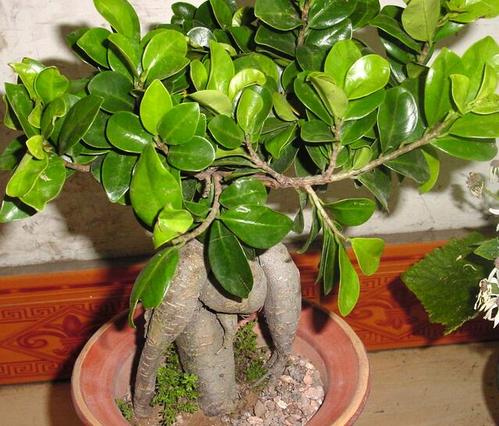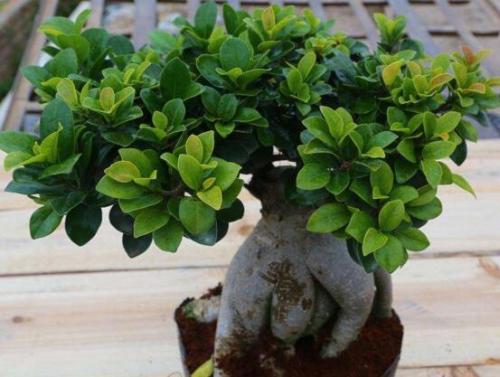How to care for Ficus Microcarpa
Written by Maggie
Aug 31 2021

Ficus Microcarpa is a kind of evergreen foliage plant. It is particularly suitable for potted, suitable for home farming, but many people in life do not understand this plant, and do not know how to care for Ficus Microcarpa. Ficus Microcarpa is actually a very easy plant to grow. Here are some caring tips.

How to care for Ficus Microcarpa leaves having black spots
Black spots on ficus microcarpa leaves should be treated in time; If the temperature is too low, the plant should be moved to the greenhouse for curing; If the temperature is too low, the mulch will be covered to act as insulation; If the water is too low, the water should be stopped; After the water is removed, the soil should be treated; After the water should be watered, the water should be dry and wet; And the prevention of diseases and insects should be done well. The following are detailed care tips.
1. Heating treatment
Ficus Microcarpa likes to grow in a warm environment. If the ambient temperature is very low, the plant will not grow well, and there will be many spots on the edge of the leaves, which will eventually wither and die. It is best to move the plant indoors for insulation, and if the plant is farmed outside for the winter, it is best to use film mulch for insulation.
2. Reduce watering
Ficus Microcarpa likes to grow in the moist substrate, but unfavorable to too much water. Too much water will lead to a lack of oxygen to the roots, leaves will appear black spots. At this time, it should be watered in time to stop, and will be treated as water accumulation in the basin after digging processing.
3. Shading treatment
Ficus Microcarpa is a light-liking plant, but it cannot be exposed to the sun outdoors for a long time, especially at noon in summer. Long-time exposure will lead to gradual blackening of leaves. At this time, after the yellow leaves are cut off, the plants should be moved to the soft light with ventilation.
4. Disease and insect prevention
Ficus Microcarpa is vulnerable to scale insects during the growth and leaf blight, harm, such as mould during the period of onset of blade appears on a lot of irregular black patches. When death plants wither, the disease should be buried after leaves completely cut off. After disinfection treatment, spray the right amount of omethoate or bordeaux mixture solution for prevention and control.

How to care for Ficus Microcarpa leaves yellowing
1. Change basins
For soil raising Ficus Microcarpa, its roots on soil have strict requirements. If long time no changes or soil is undeserved, it is easy to cause yellowing of the leaves, plant growth thin. Choose loose drainage and nutrition is rich, disinfect the soil before putting into the pot.
2. Water quality
For hydroponic Ficus Microcarpa, if long time no change water, it can lead to root rot and appear as the phenomenon of yellow leaves, resulting in Ficus Microcarpa leaves becoming brown. At this time, it should be a timely replacement of water quality, changing water to necrosis roots rotted off, disinfecting the soil. Use rainwater or lake water as a substrate. Generally change water every 3-5 days.
3. Add moisture
If soil cultivation is carried out, Ficus Microcarpa has a relatively high requirement for water. If the basin soil is too dry or too little watering, it will lead to the roots not growing normally, the leaves will dry and hair will behave. Generally during the growth period, keep the basin soil moisture.
4. Heat preservation treatment
Ficus Microcarpa is sensitive to environmental changes. It grows faster in warm conditions. If the temperature is below 6℃, the root of the plant is vulnerable to frost damage, the leaves will become yellow and soft, the plant should be moved to a room with heating equipment, the control temperature is about 18℃ ~ 33℃.
5. Reduce fertilizer use
Too much fertilizer can also lead to yellowing of Ficus Microcarpa leaves, which should be reduced in a timely manner by adding water to each fertilizer application to dilute the fertilizer concentration, applying liquid fertilizer based on phosphorus and potassium once a month during the growth period, or burying granular fertilizer around the roots.

Latest Updated
- Benefits of Bugleweed - 7 Science-backed Health Benefits
- Bugleweed Dangers & Side Effects - Is It Poisonous?
- How to Plant Evergreen Trees - What You Should Know
- When to Plant Evergreens - Grow Guide for Evergreen Trees
- 12 Wonderful Evergreen Shrubs for Your Garden
- 12 Popular Evergreen Plants with Pictures for Beginners
- When And How To Prune A Lilac Bush Like a Pro
- How to Grow & Care for Lilac Vine (Hardenbergia Violacea)
- Japanese Lilac Tree (Syringa Reticulata) Care & Propagation Guide
- Shumard Oak Pros and Cons - What to Know
Popular Articles
- Winter maintenance of Antirrhinum Majus
- How to Grow Terminalia Mantaly Tree
- How to Grow and Care for Crossostephium Chinense
- How to grow Antirrhinum Majus in spring
- Peristeria Elata (Dove Orchid) Profile: Info & Care Guide
- Underwatered Snake Plant (Sansevieria Trifasciata) - Signs And How To Fix
- How to Care for Brazilian Jasmine Plant (Mandevilla Sanderi)
- How to Grow & Care for Graptopetalum Purple Delight in Summer
- Rosa Chinensis (China Rose): Plant Growing & Care Tips
- How to Care for Baby Sun Rose (Aptenia Cordifolia)